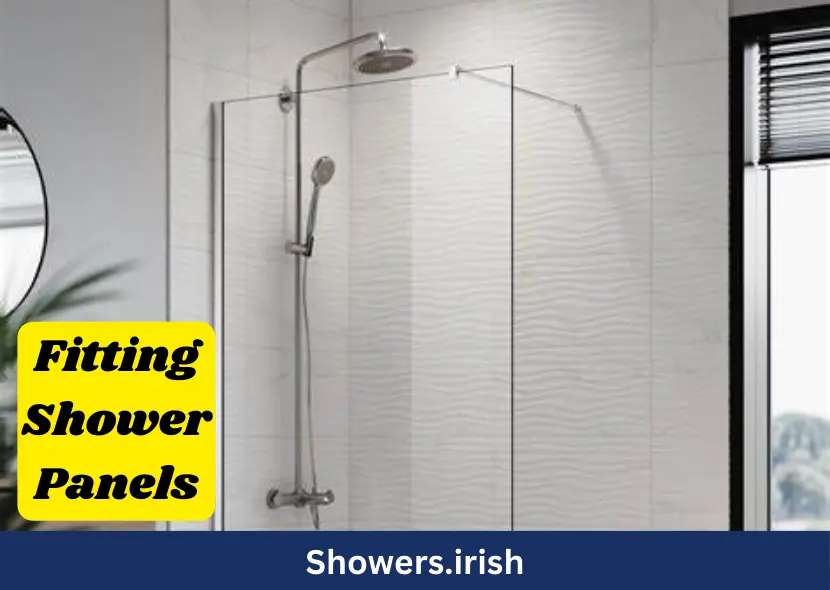When it comes to bathroom renovations, fitting shower panels is a popular and practical choice. This guide will explore everything you need to know about shower panels, from their benefits to installation tips and maintenance. Whether you are a DIY enthusiast or hiring a professional, this comprehensive article will provide you with valuable insights to ensure a successful shower panel installation.
The Benefits of Shower Panels
Shower panels have become increasingly popular due to their numerous benefits. They offer a stylish, practical, and cost-effective solution for modern bathrooms. In this section, we will explore the advantages of choosing shower panels over traditional tiles.
Durability and Water Resistance
One of the main reasons homeowners opt for shower panels is their durability and water resistance. Made from materials like PVC, acrylic, and high-pressure laminates, these panels are designed to withstand moisture and prevent mold and mildew growth. This makes them ideal for the humid environment of a bathroom.
Easy Maintenance
Shower panels are incredibly easy to maintain compared to traditional tiles. There are no grout lines that can become discolored or attract mold, making cleaning a breeze. A simple wipe with a damp cloth and mild detergent is usually sufficient to keep the panels looking pristine.
Quick and Simple Installation
Installing shower panels is typically quicker and simpler than tiling. The panels are designed to be mounted directly onto the existing wall, which reduces preparation time and minimizes disruption. This makes them a great option for DIY enthusiasts looking to update their bathroom without the need for extensive renovation work.
Aesthetic Appeal
Available in a wide range of colors, textures, and designs, shower panels can easily match any bathroom decor. From sleek, modern finishes to classic, textured looks, there is a shower panel to suit every style preference. This versatility allows homeowners to create a customized and cohesive look in their bathrooms.
Choosing the Right Shower Panels
Selecting the right shower panels for your bathroom is crucial for both functionality and aesthetics. This section will guide you through the factors to consider when choosing shower panels to ensure you make the best decision for your space.

Material Options
Shower panels are available in various materials, each with its own set of advantages. PVC panels are lightweight, cost-effective, and easy to install, making them a popular choice for DIY projects. Acrylic panels offer a glossy finish and are highly durable, while high-pressure laminate panels provide a luxurious and robust option that can mimic the look of natural stone or wood.
Size and Thickness
When selecting shower panels, it is important to consider the size and thickness. Panels come in standard sizes, but custom options are also available to fit unique spaces. Thicker panels generally provide better durability and insulation. Measure your shower area accurately to ensure you purchase the right size panels for a seamless fit.
Design and Finish
The design and finish of the shower panels play a significant role in the overall look of your bathroom. Consider the existing decor and color scheme when choosing a design. Matte finishes offer a contemporary look, while glossy finishes provide a sleek and polished appearance. Textured panels can add depth and interest to your bathroom design.
Budget Considerations
Budget is always a crucial factor in any renovation project. Shower panels come in a range of prices, depending on the material, design, and brand. PVC panels are generally the most affordable option, while high-pressure laminate panels tend to be more expensive. Consider your budget and choose panels that offer the best value for money without compromising on quality.
Installation Tips for Shower Panels
Proper installation of shower panels is essential to ensure they perform well and look great. This section will provide you with practical tips and step-by-step instructions to help you achieve a professional finish.

Preparation and Planning
Before starting the installation, thorough preparation and planning are crucial. Measure your shower area accurately and ensure you have all the necessary tools and materials. Clean the walls thoroughly to remove any dirt, grease, or soap residue. If the walls are uneven, consider using battens to create a level surface for the panels.
Cutting and Fitting
Carefully measure and cut the panels to fit your shower area. Use a fine-toothed saw or a utility knife for clean, precise cuts. Dry fit the panels to ensure they fit correctly before applying any adhesive. Make adjustments as needed to achieve a seamless fit.
Applying Adhesive
Use a high-quality adhesive recommended by the panel manufacturer. Apply the adhesive evenly to the back of the panel and press it firmly onto the wall. Follow the manufacturer’s instructions regarding the curing time and any additional steps required for a secure bond. Use panel spacers to maintain an even gap between panels, ensuring a uniform finish.
Sealing and Finishing
Once the panels are in place, apply a waterproof sealant to the joints and edges to prevent water from seeping behind the panels. Smooth the sealant with a caulking tool for a neat finish. Allow the sealant to dry completely before using the shower. Clean any excess adhesive or sealant from the panel surface to ensure a polished appearance.
Maintaining Your Shower Panels
Maintaining your shower panels is key to keeping them looking new and performing well. This section will provide you with tips and best practices for cleaning and maintaining your shower panels.

Regular Cleaning
Regular cleaning is essential to prevent the buildup of soap scum and grime. Use a non-abrasive cleaner and a soft cloth or sponge to wipe down the panels after each use. Avoid using harsh chemicals or abrasive pads, as they can damage the panel surface. For stubborn stains, a mixture of vinegar and water can be effective.
Preventing Mold and Mildew
While shower panels are resistant to mold and mildew, it is still important to maintain proper ventilation in your bathroom. Use an exhaust fan or open a window to reduce humidity levels. Wipe down the panels regularly to remove any moisture. If you notice any signs of mold or mildew, clean the affected area with a mild bleach solution and ensure the bathroom is adequately ventilated.
Inspecting Seals and Joints
Regularly inspect the seals and joints of your shower panels to ensure they remain intact. Over time, sealant can degrade and may need to be reapplied. Check for any gaps or cracks and reseal as necessary to prevent water from seeping behind the panels. Properly maintained seals will extend the life of your shower panels and prevent water damage.
Addressing Damage
If your shower panels become damaged, it is important to address the issue promptly. Small scratches can often be buffed out with a mild abrasive cleaner, while deeper scratches may require a repair kit specific to the panel material. For significant damage, it may be necessary to replace the affected panel. Regular maintenance and prompt repairs will keep your shower panels looking and functioning their best.
Conclusion
Shower panels offer a stylish, practical, and cost-effective solution for modern bathrooms. Their durability, ease of maintenance, and quick installation make them a popular choice for homeowners and DIY enthusiasts alike. By choosing the right materials, following proper installation techniques, and maintaining your panels, you can enjoy a beautiful and functional shower space for years to come.
Frequently Asked Questions (FAQs)
1. What are the benefits of shower panels over tiles?
Shower panels are durable, water-resistant, easy to maintain, quick to install, and come in various designs to suit any bathroom decor.
2. How do I choose the right material for my shower panels?
Choose based on your needs and budget:
- PVC: Lightweight and affordable.
- Acrylic: Glossy and durable.
- High-Pressure Laminate: Luxurious and robust.
3. What do I need for installing shower panels?
You’ll need measuring tape, a saw or utility knife, adhesive, panel spacers, waterproof sealant, a caulking tool, and a soft cloth or sponge.
4. How do I maintain shower panels?
Wipe down regularly, ensure proper ventilation, inspect seals and joints, and promptly repair any damage.
5. Can I install shower panels myself?
Yes, shower panel are suitable for DIY installation, but you can hire a professional for a guaranteed finish.
Revamp your bathroom with ease using our high-quality shower panel. Whether you’re looking to upgrade your space or tackle a renovation project, our guide on fitting shower panel will make the process straightforward and hassle-free. These panels are not only stylish but also incredibly practical, offering a sleek, modern look without the extensive labor and cost of traditional tiling.
Our detailed instructions cover everything from preparation to final touches, ensuring you achieve a professional finish. Discover tips on measuring accurately, cutting panels to size, and securing them in place for a waterproof seal. With our expert advice, even those with minimal DIY experience can transform their bathroom into a beautiful, functional space.
Ready to get started? Check out our comprehensive guide on fitting shower panel here: Fitting Shower Panels.
Embrace the simplicity and elegance of shower panel and enjoy a stunning bathroom upgrade.
Credit Website: www.ireland.ie/
